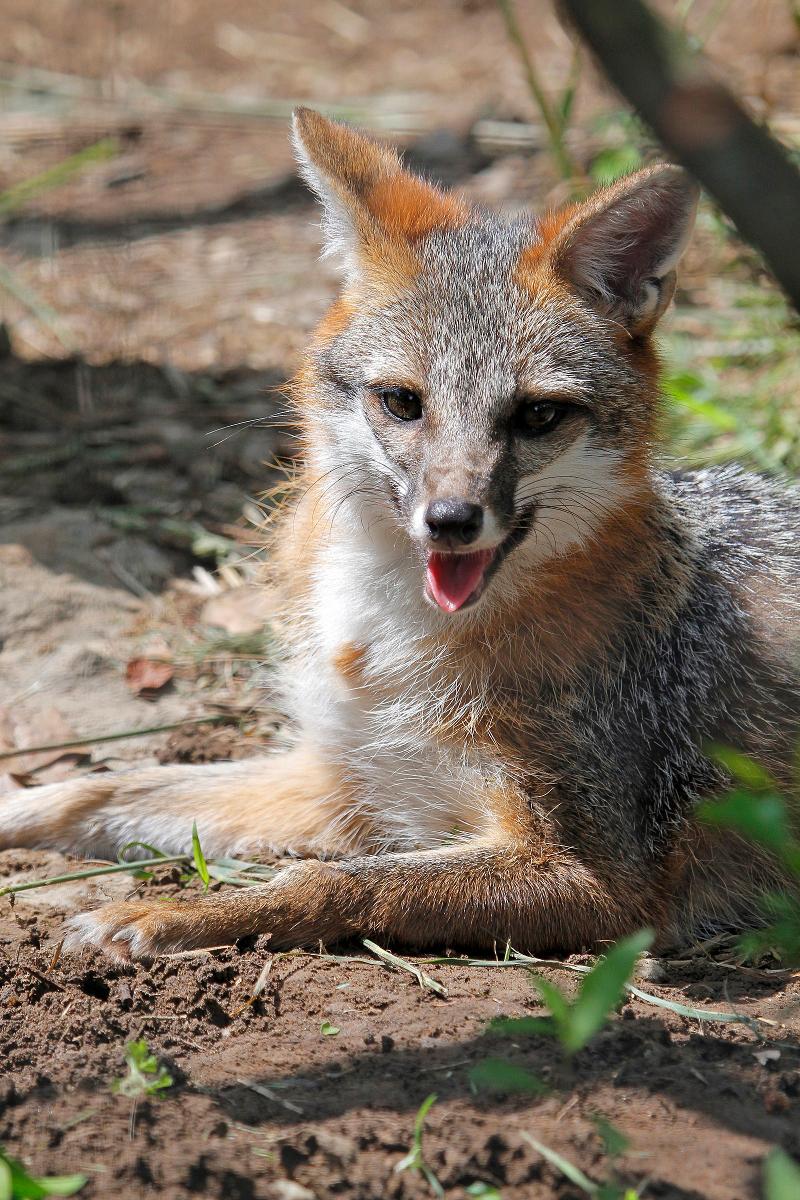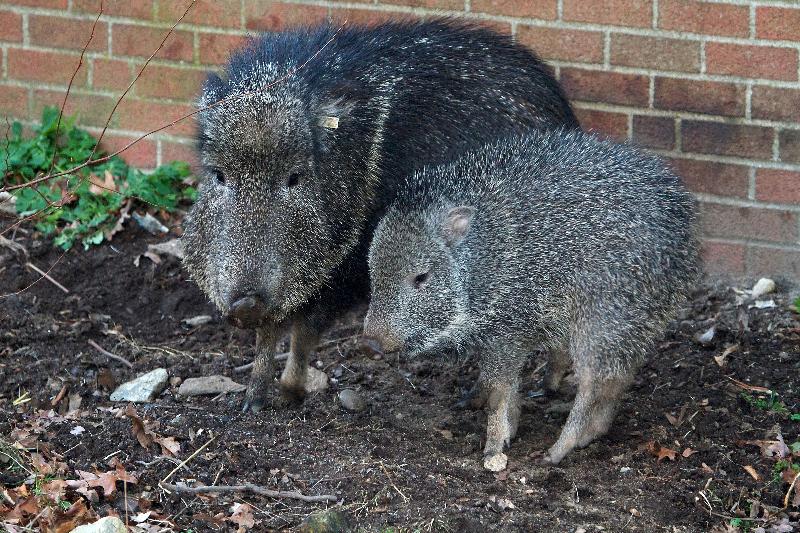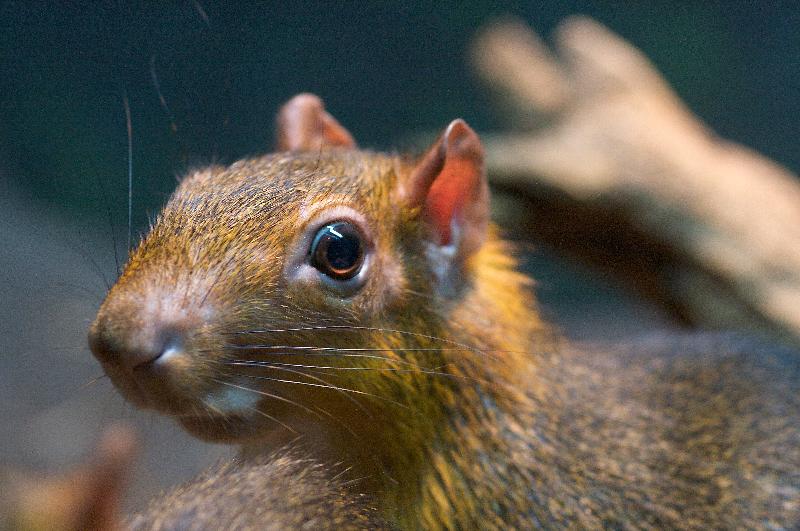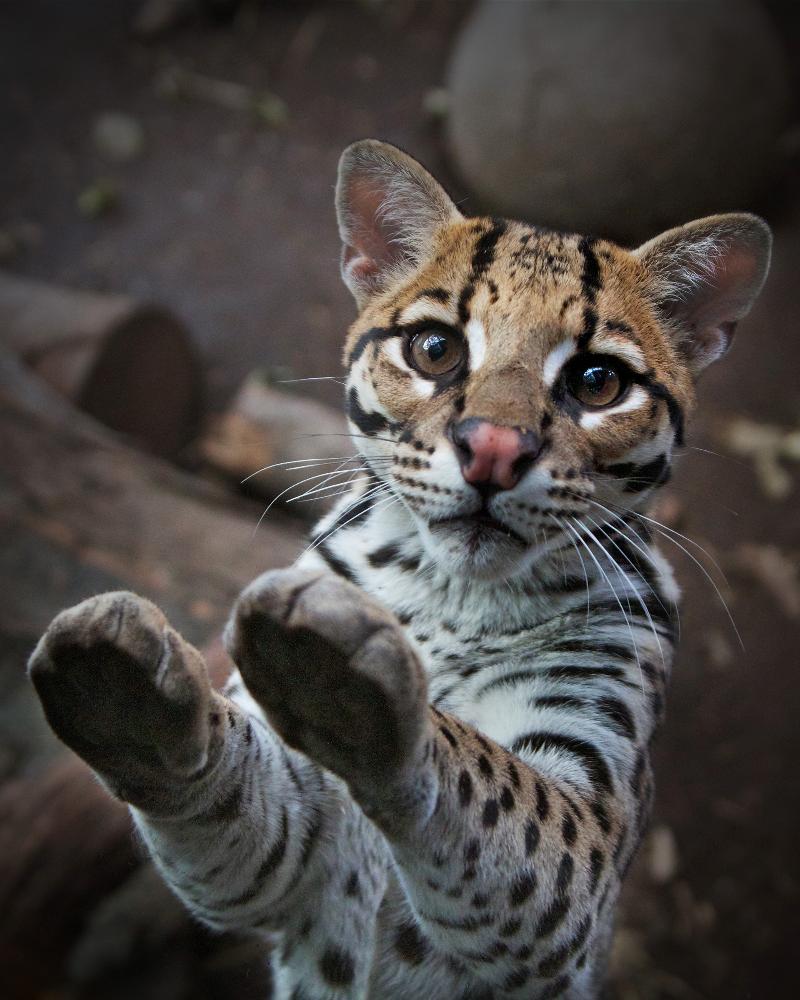The last chance for the public to view two giant tortoises at Connecticut's Beardsley Zoo will be this Sunday, September 23. "Professor," a Galapagos tortoise weighing 416 pounds, and "Skipper," an Aldabra tortoise weighing a whopping 537 pounds, spent the summer in Bridgeport as part of the zoo's 90th birthday celebration and will be heading home to Cameron Park Zoo in Waco, TX. At the same time, the zoo is pleased to announce the arrival of several new animals for the fall season. A North American river otter, two gray foxes, two agouti, and a Chacoan peccary are the latest additions to Connecticut's only zoo.
"The Zoo takes pride in welcoming new animals throughout the year for our visitors to enjoy," stated Gregg Dancho, Zoo director. "We work hard to make sure there's always something new at the zoo and that's especially true as we celebrate our 90th birthday."
 North American River Otter
North American River Otter
A one-year-old female North American river otter named Necedah arrived at the Zoo from the Minnesota Zoo in Apple Valley, Minnesota. Necedah joins Rizzo, a nine-year-old male, to greet and entertain guests. The zoo hopes that the pairing will produce otter pups later this year. River otters are members of the weasel family. Their diet consists of fish but they also will eat turtles, crayfish, and amphibians. These playful mammals can remain under water for six to eight minutesand use their tails and back legs to push through the water at speeds of up to 18 mph. Male otters tend to be larger than females and can vary from eight to 40 pounds.

Gray Foxes
Last month an unrelated male and female arrived from Alligator Adventure in North Myrtle Beach, South Carolina. Both are estimated to be about 4 or 5 years old. The foxes are rehab animals, raised as babies in South Carolina. Rehab animals are animals that cannot be reintroduced into the wild. Its grizzled upper body, strong neck, and black-tipped tail distinguish the gray fox, which can range from 30 to 44 inches in total length and from eight to 20 pounds. Strong, hooked claws allow the gray fox to scramble up trees, which helps it to escape many predators such as the dog or the coyote. It descends primarily by jumping from branch to branch or by descending slowly backwards. The gray fox is nocturnal and sets up its den in hollow trees, stumps, or other burrows during the day.
 Chacoan Peccary
Chacoan Peccary
A new female Chacoan peccary, named Amarillo, joined the already existing female, male, and baby now on exhibit. The 12-year-old peccary arrived from Fresno Chaffee Zoo, in Fresno, CA, and made her first public appearance in late July. These peccaries, which are endangered, are being brought together for mating purposes. Their transfer is coordinated through the Association of Zoos & Aquariums (AZA) Species Survival Plan Program. Animals are regularly transferred between AZA accredited zoos in order to help manage specific, and typically threatened or endangered, species populations.
Chacoan peccaries are between one and a half to two and a half feet at the shoulders and grow to weigh between 66-88 pounds. They are most active during the day and then find a shaded area to cool under as the day progresses. Their hair is course gray to gray-brown, interspersed with long guard hairs and they have a whitish collar across the shoulders and under the chin. The head is extremely large and the nose tapers to a snout. Chacoans feed on various species of cacti, fruit, and roots using their leathery snouts to roll the cacti on the ground, rubbing the spines off. They also pull the spines off with their teeth and spit them out. The kidneys of the Chacoan are specialized to break down acids from the cacti.
 Agouti
Agouti
Two male agoutis, a one year old and a 10 month old, arrived from Buffalo Zoo in Buffalo, NY, and are now on exhibit in the Rainforest building. Similar to guinea pigs, agoutis are larger and have longer legs. They may grow up to two feet in length and nine pounds in weight and can live for up to two decades, which is a long time for rodents. In the wild, they live in wooded areas and hide in hollow tree trunks but they also can swim and are comfortable in the water. They eat fruit, roots, and other vegetation and are known to hoard their meals by burying it.
 Baby Animal Updates & Animal Departures
Baby Animal Updates & Animal Departures
A baby pronghorn, who made her political debut with Governor Malloy earlier this summer, was born in early June. Pronghorn are the fastest land mammals in North America. The baby pronghorn has been transferred to the Metro Richmond Zoo in Richmond, VA but the public will still be able to see both mom and dad, as they remain on exhibit.
The Zoo also has bid farewell to some very special friends: 
- Ayla, the one and a half year old Brazilian ocelot kitten, has found a new home at the
Buffalo Zoo in Buffalo, NY. This rare kitten, born in January 2011, was the world's first endangered cat produced by Oviductal Artificial Insemination (AI). - Our 14 year old male Timber wolf, Apache, died of natural causes in July. His mate, Cheyenne, passed away September 10th at 14 years of age.
- Joaquin, a four year old male Andean (spectacled) bear, departed for Good Zoo in Wheeling, WV this summer. This exhibit is undergoing renovations in preparation for a new animal, which is expected to arrive in late fall or early winter.
 |
| Timber wolf |
Connecticut's Beardsley Zoo is closer than you think and is open daily from 9:00 am to 4:00 pm. Adult admission (ages 12 & older) is $12.00, children (ages 3 -11) and senior admission (62 and older) is just $10.00, and children under 3 years old are free. Zoo members are also admitted free. Parking at the Zoo is free of charge. For information, call: (203) 394-6565. Connecticut's Beardsley Zoo is located at 1875 Noble Avenue, Bridgeport, Connecticut.